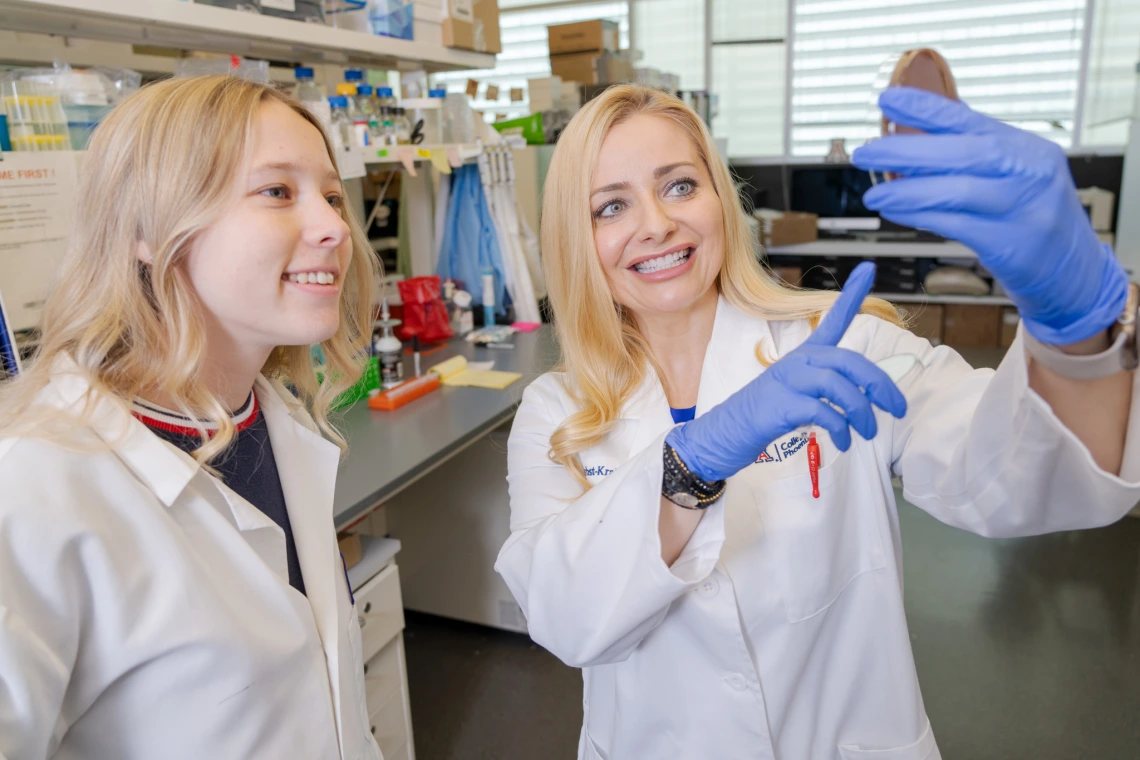In the news: Rebuilding vaginal health with beneficial bacteria

Melissa Herbst-Kralovetz (right) and her trainee, Hannah Harris (left), study the microbial ecosystem of the female reproductive tract to improve women’s health.
While microbial diversity keeps the gut in good shape, a healthy vagina thrives under a different rule: Few bacterial species should dominate the niche. The human vagina’s glycogen-rich environment is a unique biochemical haven for some members of the genus Lactobacillus. These microbes convert glycogen and its breakdown products into lactic acid, leading to a particularly low vaginal pH in humans — about 4.5. This is a stark contrast to the 5.4 to 7.8 range observed in other mammals (1). The acidic environment creates a hostile barrier that keeps many pathogens in check.
Yet, the vagina is anything but isolated.
Read the story at Drug Discovery News



